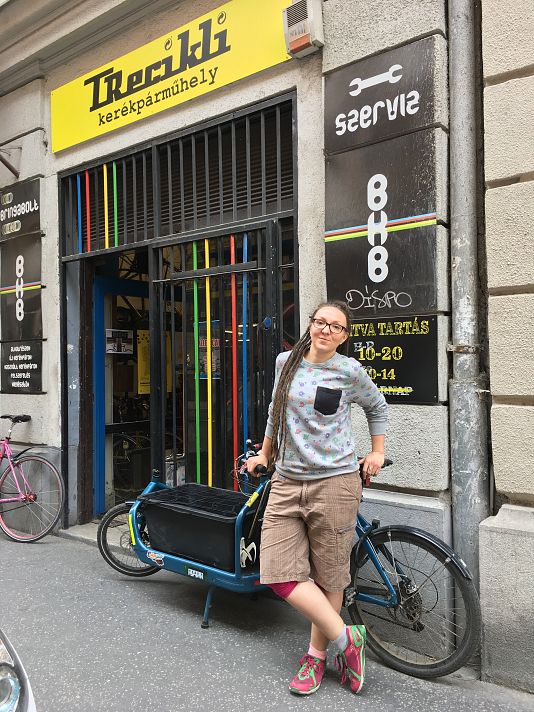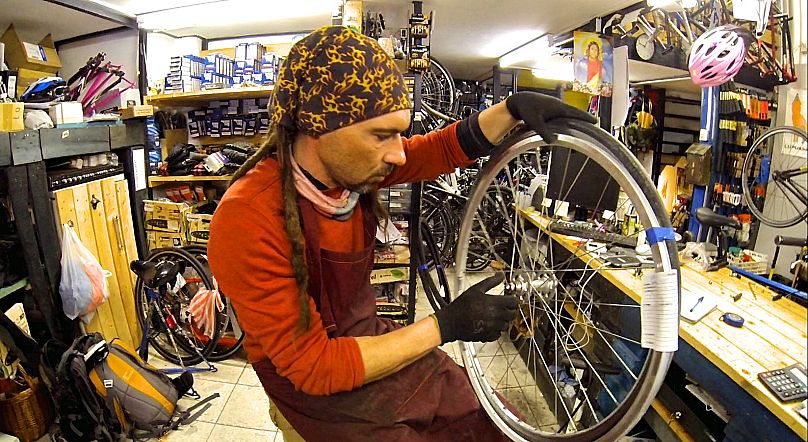Budapest has a burgeoning cycling scene, driven by an increasing number of young people using two wheels for everyday transport, a flourishing bike messenger community, and the introduction of the Bubi bikes as a new mobility solution for everyone in the city centre.
Budapest has a burgeoning cycling scene, driven by an increasing number of young people using two wheels for everyday transport, a flourishing bike messenger community, and the introduction of the Bubi bikes as a new mobility solution for everyone in the city centre.
To find out more, we met up with dedicated cyclist and freelance journalist Elisabeth Grabow at bike shop Trecikli, a friendly stop for two-wheel travellers in the Hungarian capital. The store is focused on recycling, one of the defining features of the Budapest cycle scene, where old frames are upcycled into a new commuter-friendly steeds.
The owners take pride in rebuilding older bikes in a modern style, often converting them to single speed for easy of use, low maintenance and light weight. Perfect for the flat Pest side of the city, and somewhat more challenging on the famously hilly Buda side.
"There is definitely a cycling scene here in Budapest," smiles Grabow. "One of the very specific things about cycling in Budapest is recycling, and we're just in a spot where this is happening."
"There are bike races, there are underground races, there are bike messenger races So yeah, there's a very active biking culture going on here."
The city now has 300 kilometres of bike lanes and bike paths, with more on the way. Grabow is pleased with the progress: "The bike lanes help quite a lot, because if there's a physical mark on the street, then car drivers will be way more aware that 'oh, yes, there may be other participants in traffic as well'.
"It makes sure that we have our own space as cyclists, which is very important, especially for people who are not as used to being part of traffic, who only ride maybe a couple of times a month but want to enjoy cycling, so this is very important in terms of developing the cycling culture."
What does Grabow, a keen fixie rider, make of the green Bubi bikes? Despite them being slow and heavy by most cyclists' standards, she views them as positive influence on the capital's transport infrastructure: "I think Bubi has changed a lot with regards to people trying to commute within town on bikes, because if they live a bit outside, on the outskirts, they just come into town by public transportation, but to get around in town, I think they are a great opportunity, because you don't have to mind the maintenance, you don't have to mind locking them, because it's all there, it's all taken care of. It's really convenient, I think."













